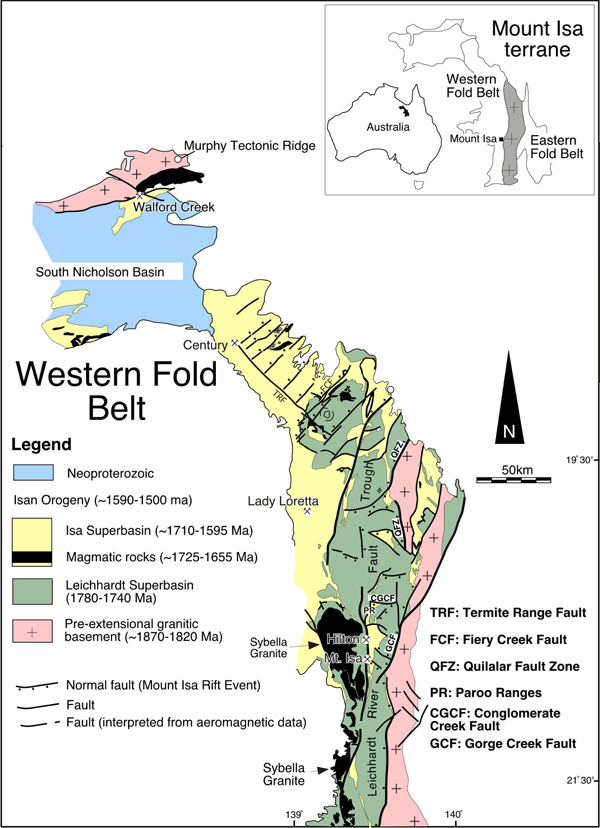The Western Fold Belt in the Palaeproterozoic Mount Isa terrane has one of the highest density of large sediment hosted Zn-Pb deposits (Figure 1). These deposits display a wide morphology and belong to different deposit class, and include the giant Mount Isa SEDEX orebody (McGoldrick and Keays, 1990) and the Mississippi Valley-type Century deposit (Broadbent et al., 1998). All major deposits of the Western Fold Belt are hosted within the extensionalsag Isa Superbasin (Figure 1: Southgate et al., 1998; Betts et al.,1999).
Figure 1. Map of western Mount Isa terrane

Geological map of western Mount Isa terrane highlighting the distribution of major structural elements, MIRE-aged magmatic
provinces, preserved areas of Isa Superbasin, major normal faults, and large Pb-Zn deposits. The map is summarised from Blake, 1987b.
Increased geochronological resolution of the stratigraphy of the Isa Superbasin suggests that these deposits did not form at the same time but rather developed during discrete episodes of mineralization throughout the evolution of the basin. Despite the apparent differences between these deposits they do share some common features. These include their proximity to the intersections of extensional faults (Lister and Betts, in review); their absence within syn-rift sequences of the Isa Superbasin; and their spatial distribution away from the locus of maximum crustal extension. Recent studies on the basin architecture, extensional evolution, and geochronology of the Isa Superbasin (O'Dea et al., 1997b; Betts etal., 1998; 1999; Southgate et al., 1998; Page and Sweet, 1998) has provided the necessary framework to place these deposits into context. Moreover, recent study by Betts et al. (1998) has postulated an asymmetric extension model for lithospheric extension during the Mount Isa Rift Event (O'Dea et al., 1997b; Lister et al., 1999; Betts et al., 1999). This model reconciles the basin architecture during and after the Mount Isa Rift Event and explains the variation in the basin geometry between the rift and post-rift evolution of the basin. In this paper the influence of asymmetric extension on the development of Pb-Zn deposits is explored.